Do you remember the Road Runner cartoon character? Who runs so fast that his legs look like they are spinning around really, really fast? That was me last Saturday doing an FTP test. The only difference was that I was pretty much unable to breath, let alone emit a cheery, “Meep meep!”
FTP
FTP (Functional Threshold Power) is a measure of fitness. It is the power you can maintain for an hour, measured in watts. My only real interest in it at the moment is because it is the method Zwift uses to tailor workouts. If your FTP is too low then they will be too easy and if it is too high then they will be too hard. It is also a good single metric to monitor to see how your riding improves.
Whilst Zwift does attempt to auto-detect FTP, it is recommended that you do an FTP test. I decided to try one sooner rather than later despite knowing that the results would be pretty grim. If nothing else it would give me a baseline of where I started on my fitness journey.
Zwift has several FTP tests you can do and I opted for the Ramp Test Lite. It is most suited to people under 60 kg (not me!) or people who are new to cycling and who expect their FTP to be below 175 watts (me!). The idea is that you have a warm-up period after which you are given power output targets you need to reach and cycle at for sixty seconds. Every minute the target increases and you pedal until you have to stop.
Take One
My first attempt was a bit strange. During the warm up I was pedalling at around 85 RPM, a cadence I feel pretty comfortable at. Zwift gave me lots of tips, motivational messages and a few instructions and then the test started.
Suddenly the resistance dropped away and I panicked and started pedalling faster. Even as the power targets ticked upwards, the resistance never seemed to change and so my legs were pumping away with the pedals and my feet spinning faster than I was comfortable doing at around 120 RPM.
In my panic I fiddled with the gear shift buttons on my Zwift Ride which allowed me to change the bias percentage (which raises or lowers the intensity) but even with it maxed out the resistance felt too low.
I really had no idea what was going on or what I was doing and I finally ran out of steam when I’d achieved 14 stars by completing the levels up to 170 watts. When I checked my FTP score in Zwift it was set to 120 and I assumed that this was all strange but normal.
The Community Rescue
Fortunately I posted about my results in Ryan Condon’s Discord channel (if you’ve not read my recent posts about my lifestyle changes then please do if you want to know who Ryan is). Fortunately some kind souls pointed out what had gone wrong and explained how the test is meant to be done.
When you are riding an indoor smart trainer normally you change your gears to change the resistance. This is exactly how it works if you were riding a bike outside. If you are going uphill and you change to a lower gear, each turn of the pedals moves you forwards less but it is easier to turn the pedals so it feels easier but slower. This is called Sim, or simulator, mode.
During a Zwift workouts, which include ramp tests, the Zwift Ride (and other smart trainers) will use Erg Mode. In this mode the idea is to maintain a particular wattage and the smart trainer will adjust the resistance to let you achieve that wattage. If you are pedalling at a cadence of 90 RPM and you are exerting 120 watts of power due to the current resistance, if you reduce the cadence to 60 RPM then the resistance is increased so that you still achieve 120 watts. Pedalling is harder but slower. Similarly, if your cadence increases then the resistance is reduced… pedalling is easier but faster.
There is more information about this at Zwift Insider and if you read to the end of that article, during my FTP rest I was doing a reverse Spiral of Death (which definitely isn’t a Spiral of Life!).
So during the FTP ramp test I should have been maintaining my cadence as long as I could and just let the smart trainer increase the resistance to achieve the power output needed. As the test progresses you will inevitably drop your cadence and need to pedal harder and you will finally reach the point where you cannot hit the power outputs and then you get a lovely 10 minute cool-down ride during which your legs may or may not work properly.
Take Two
Two days after my first attempt I had another go and this time I was powered by knowledge as well as my spindly legs. The whole experience was quite different and as long as I didn’t panic and just let the Zwift Ride adjust the resistance to my cadence then it was fine.
The two things I had to be aware of were that at the beginning, when the power output targets are low, you can end up spinning if you are not careful and also that it can take the smart trainer a second or two to adjust the resistance so you need to focus on maintaining your cadence and nothing else.
At the end of this test, my tiredness was less from zooming along like Road Runner and more like the resigned exhaustion Wile E. Coyote suffers from. But, like him, I’ll try again and again and again.
Test Comparisons
This time my progress throughout the test was much more what I would expect.
You can see in the screenshots below that my cadence was much move even during the second test (the drop in both charts is when I “broke”).
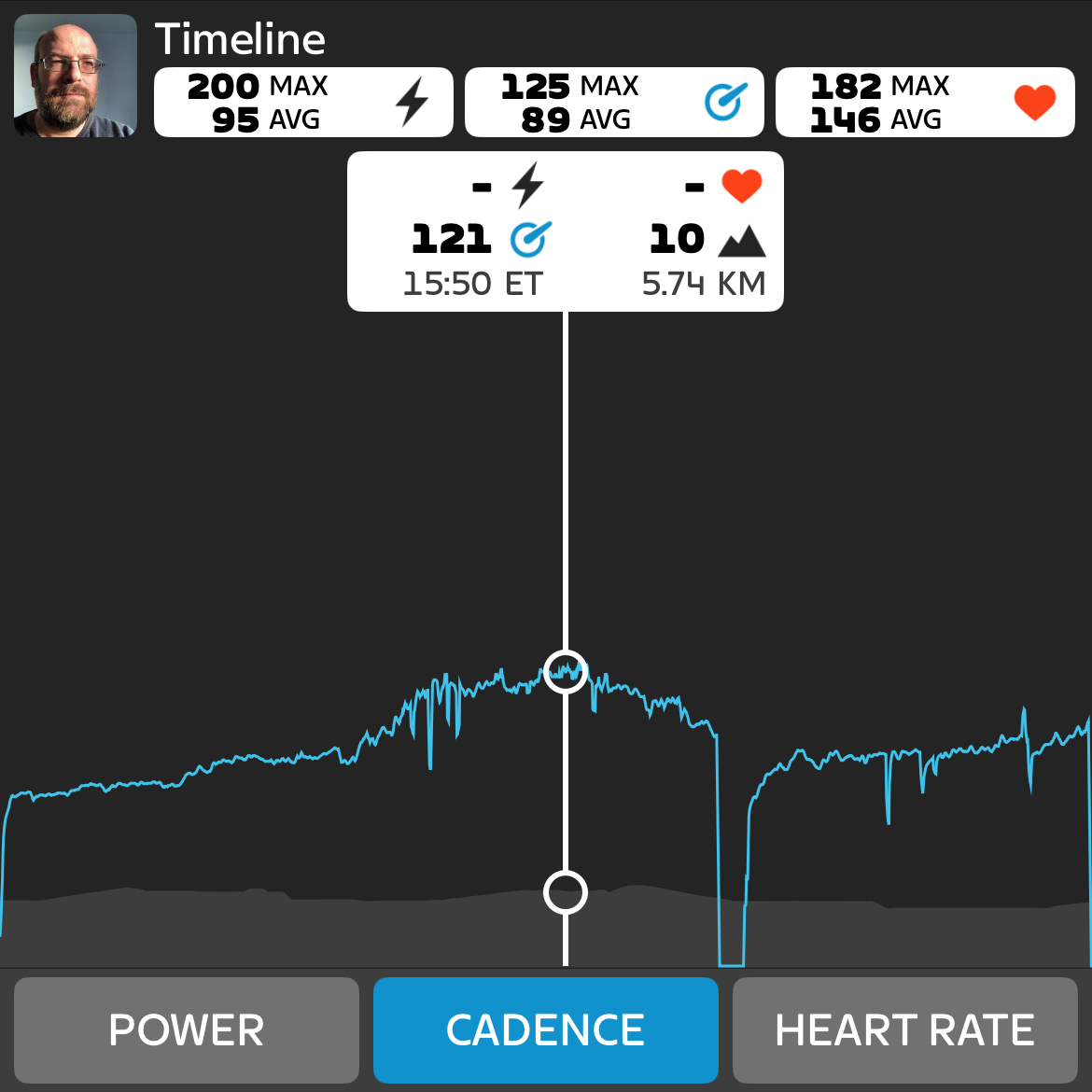
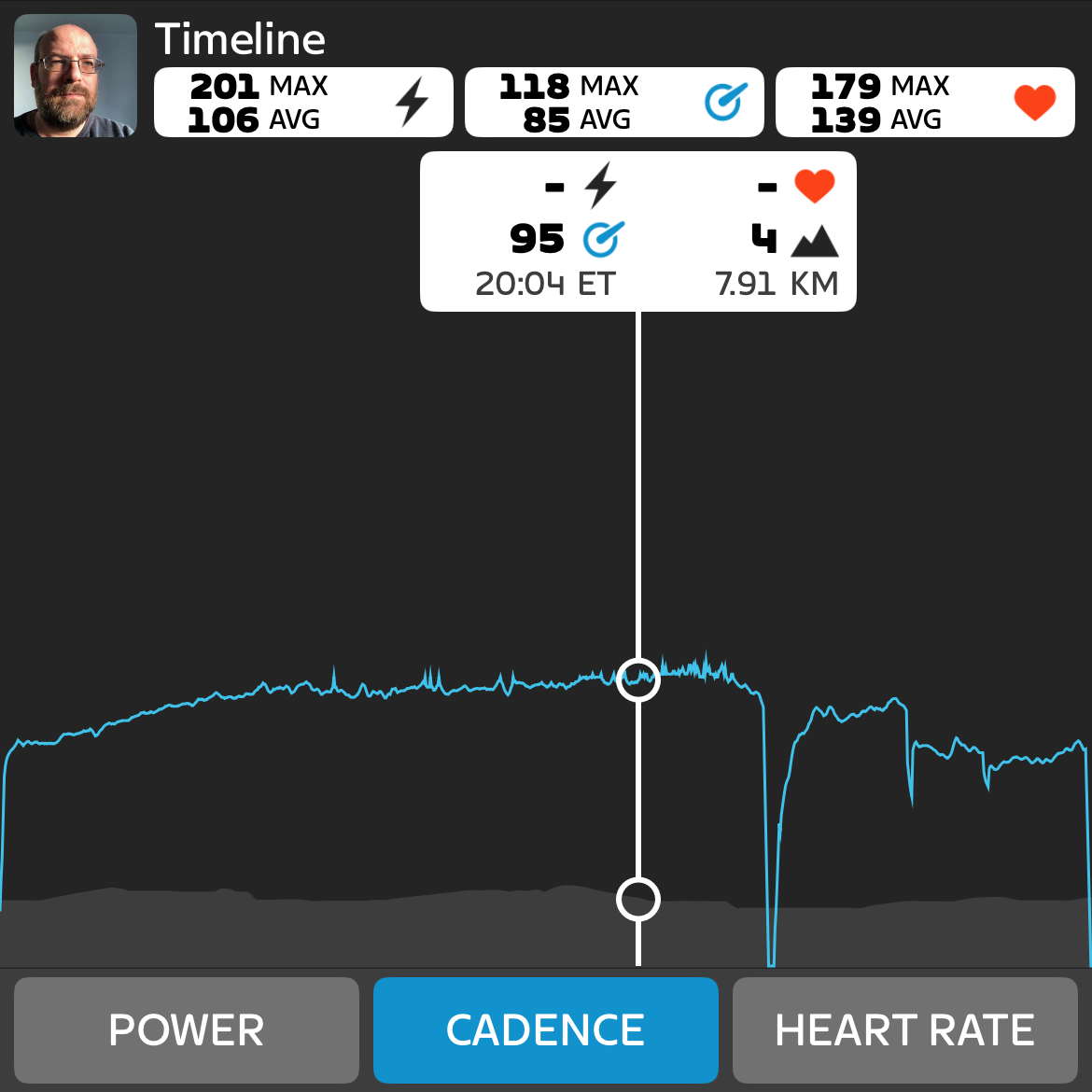
Similarly, the increases in power demands are much more defined in the second test because I was not fighting the testing process.
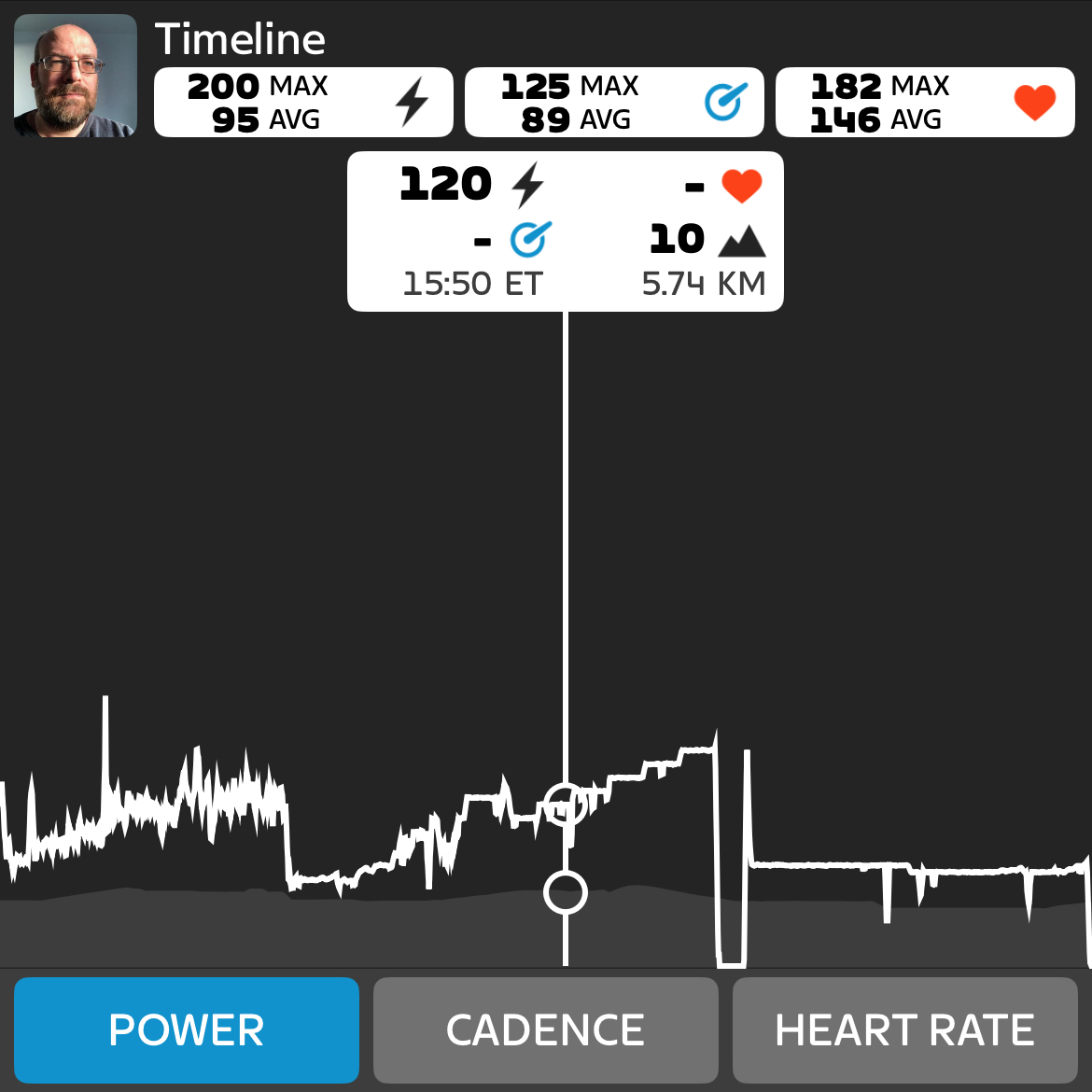
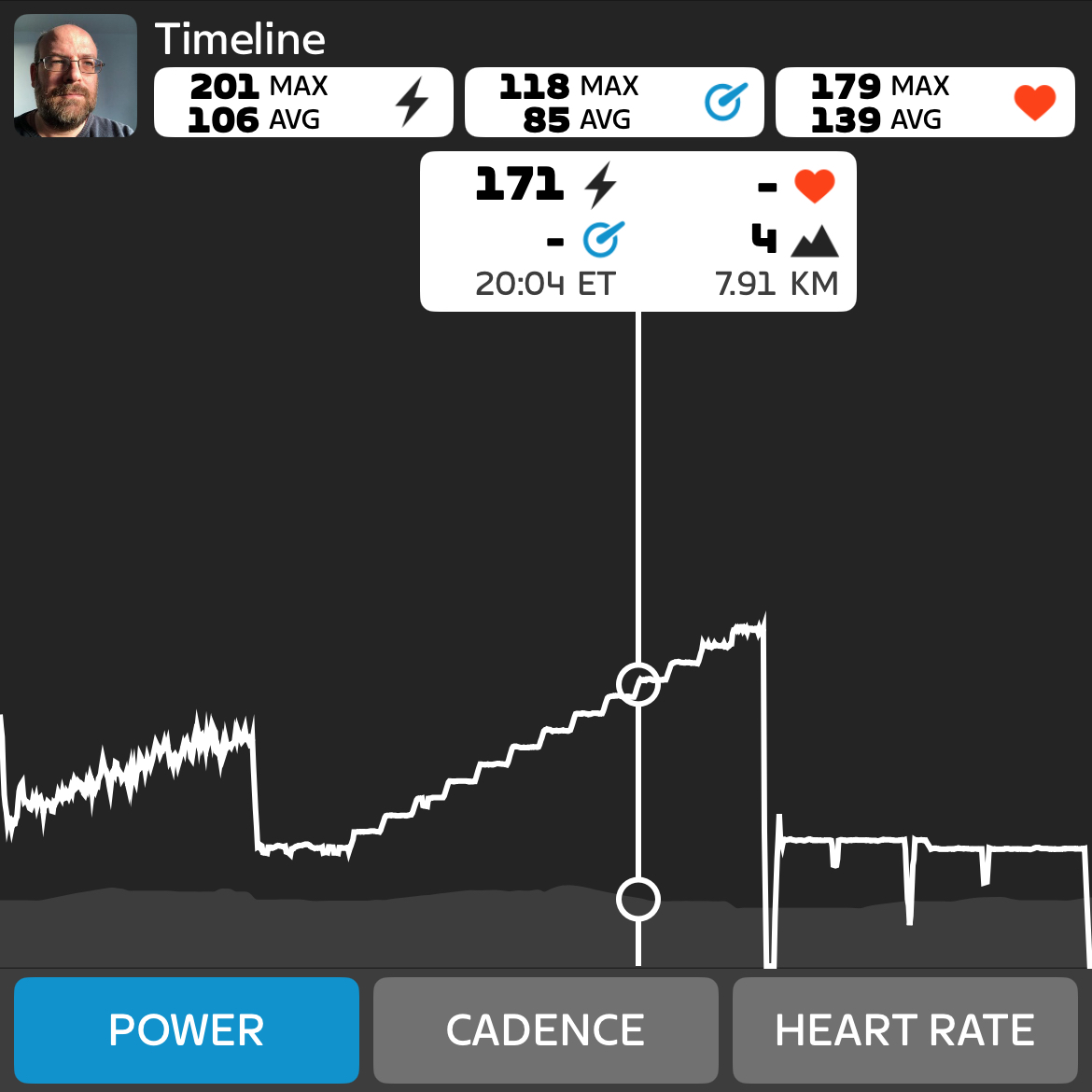
The combined chart clearly shows how heart rate and power increased during the second test whilst cadence stayed fairly level. In the first test everything was all over the place.
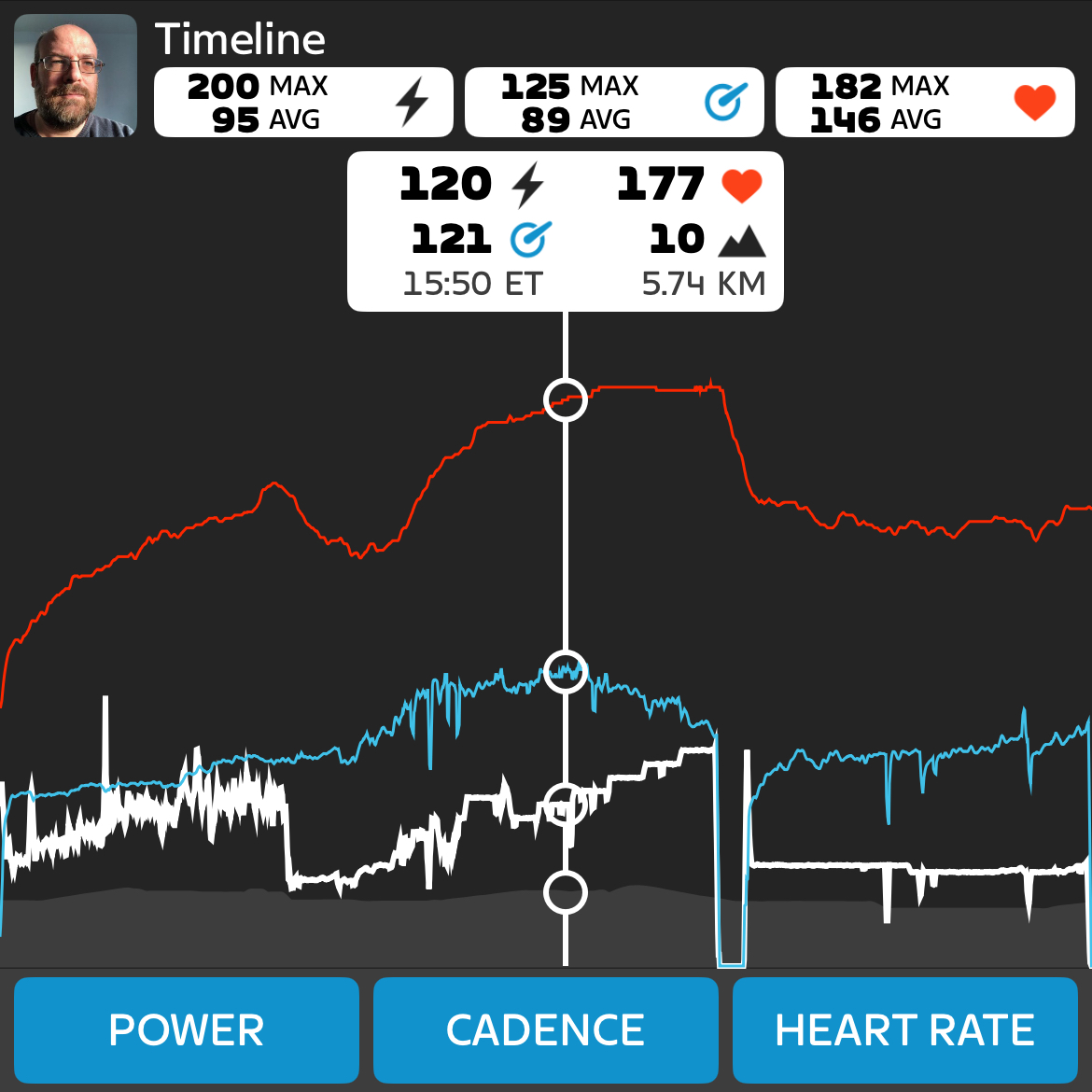
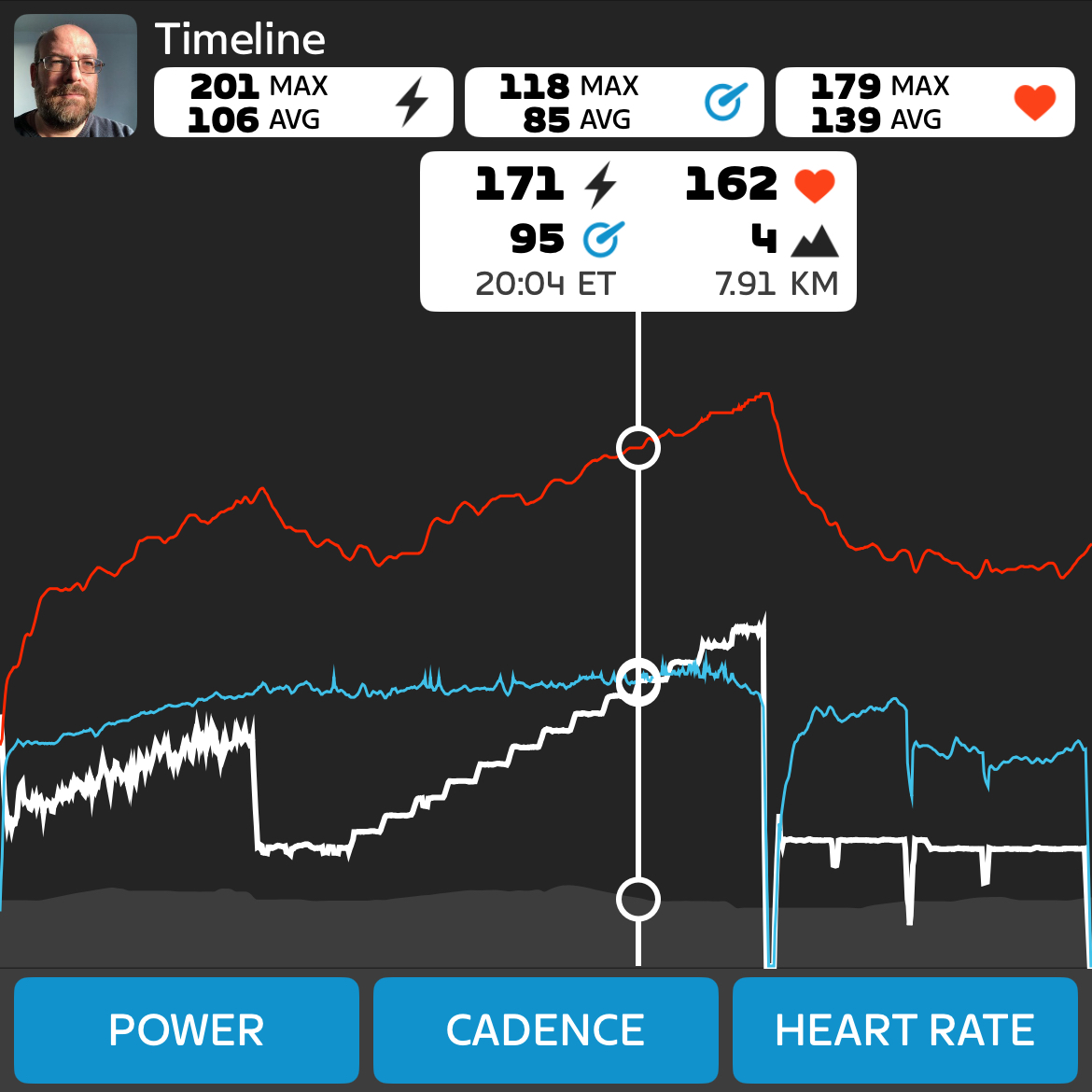
Conclusions
By the end of the second test I’d achieved 18 stars (vs. 14) and reached the 210 watts level (vs. 170). Zwift set my FTP as 150 (vs. 120) and I’ll much more happily take that as my baseline to work from.
As a Zwift newbie, knowing about Sim vs. Erg Modes was the problem and something I should perhaps have known about before I did the FTP test. When I re-did it, I did try to carefully read all of the messages on the screen as they popped up to see if it was explained but I’m pretty sure it is not. Other members of Ryan’s Discord said that they had been similarly caught out so this is perhaps something that Zwift could add to the pre-test messages.